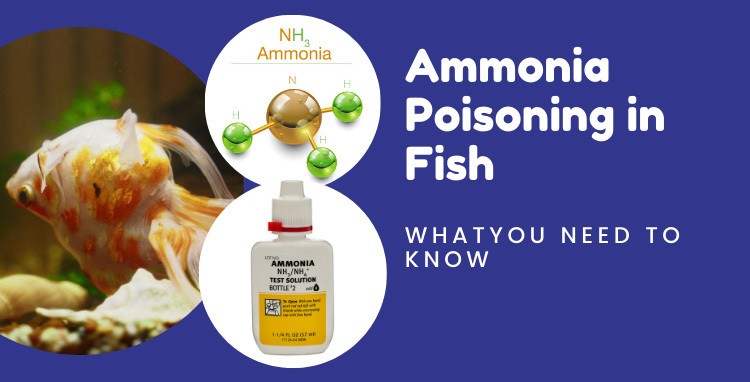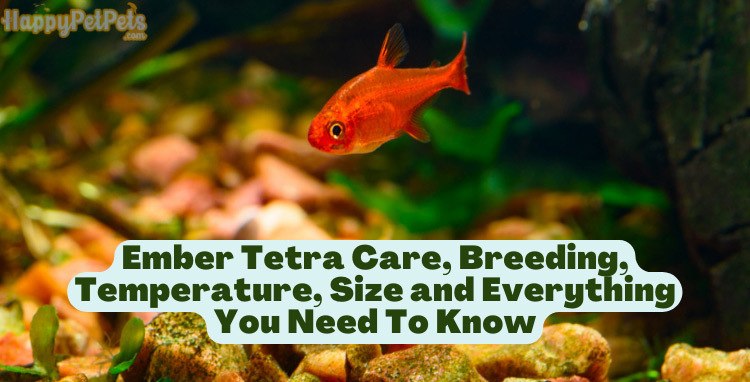You already have a little marine family in your house? Setting up a reef tank is not so hard for a beginner, but you might struggle with the maintaining task for that fish tank. Not only cleaning the tank is important, but controlling the concentration of other substances in your tank is also necessary to maintain a good living environment for your fish health and growth.
By these ‘how to lower alkalinity in reef tank’ tips below, your fish is ready to live better.
See more via YouTube: Elevated Alkalinity and Calcium for faster growth?
Know More About Reef Tank Alkalinity Level
Reef tank alkalinity is an evaluation of water capacity to withstand the change in pH level; in other words, it means how much the water can neutralize the acid.
pH is quite different compares to alkalinity. While alkalinity shows the ability to neutralize ion H+ (buffering water), pH level only points out if that reef tank water is basic, neutral, or acidic on a scale from 0 to 14.
Both pH and alkalinity are noticeable indicators for a reef tank. If we mention about water quality, alkalinity will be a bit more important than the pH.
Low alkalinity can lead to a lower pH level (which is also caused by high ammonia, lack of calcium, etc.). The alkalinity level is considered as low if it under 8 (dKH).When the alkalinity is too low, you shouldn’t change the water. Water changes decrease the pH level rapidly that can be fatal for fish, invertebrates, and corals in your reef tank.
Lots of species need their own proper pH level, and corals need to absorb alkalinity every day.
High alkalinity also affects the aquatic species in your reef tank. Many types of fish will turn out to be vulnerable as their protection cover being dissolved by the high alkalinity overtime. Your fish can be attacked by bacterias, and get infection easier.
In addition, the high level of aquarium alkalinity may create toxic in the water by ammonia. It hurts the fish fins and tails, prevents them from growing, and leads to death if your fish is staying in a too high alkalinity environment for a long time.
Besides, high alkalinity sometimes warns a low calcium level in the tank. Low calcium also affects the invertebrate to uptake their needed elements. Calcium that is precipitated from the water might stick in the tank equipment, causing more dirt, and damage to your reef tank.
There are some basic sources that raise pH in reef tank such as:
Too much oxygen can decrease the amount of carbon dioxide, which also raise the pH level
Adding too much alkalinity supplements in a short time
Fish waste, dirty water, and a weak filtration system can cause the pH to rise
How to Lower Alkalinity in Reef Tank
List Title if needed
Step 1: Test Your Reef Aquarium Alkalinity
To check the level of alkalinity available in a reef tank, you can easily do the task with an alkalinity test kit such as Hanna Checker or the Red Sea brand.
You can also make a DIY reef tank alkalinity tester with standard acid following these steps:
- Buy standard acid and a pH meter
- Take an aquarium water sample (any volume that you can measure exactly like 50ml, 100ml, 200ml, 1 cup, 2 cups, etc.)
- Slowly put the acid into the water sample, and use the pH meter to check the pH level
- Keep tracking the amount of acid added until the pH is at 4.5
- Find out the alkalinity by the equation:
- Alkalinity (meq/L) = (Volume of acid used/ Volume of water sample) *100
- Alkalinity (dKH) = (Volume of acid used/ Volume of water sample) *280
*** Use the same unit for two types of liquid in the equation
For example, I used up to 30(ml) of standard acid to adjust the pH level for 500(ml) of aquarium water. According to the equation above, my reef tank will have the alkalinity level at:
- Alkalinity = 30500*100= 6.0 (meq/L)
- Or alkalinity = 30500*280= 16.8 (dKH)
What level of a reef tank alkalinity should be?
The normal range of alkalinity in a reef aquarium is around 8-12 (dKH), so the alkalinity in the previous example is too high.
Notice: If you are doing this for the first time, you should prepare alkalinity test kits for more precision. Consider taking two alkalinity test kits from different brands, use them along with this DIY testing method.It might take you more effort, and money to test the alkalinity level at the beginning, but it definitely deserves to do since one of the kits can be a malfunction or you make a wrong step that shows a bad result at the end.Think about you get the wrong alkalinity level, and add more solutions that don’t fit for it? It could be a total mess for your nano reef tank fish, water, coral, etc. Not only nano but any other reef tanks can be affected negatively.Therefore, try to measure the alkalinity in multi ways to check the accuracy, once you get used to it, the next time will be much easier.
Step 2: Do the Water Change and Salt Mix Solution
You should change 20-25% of your reef tank water daily until it reaches the alkaline water target (usually 8-12 dKH)
Prepare higher quality water for the reef tank with salt mix. Best reef salt should only have the maximum dKH at 8 or lower
You can remove 20% of the old water in the tank. Replace it with the same volume of freshwater that has been mixed with a proper portion of best salt mix to dilute the water more efficiency
Step 3: Wait for the Reef Tank Alkalinity to Improve
Your reef tank coral may consume an amount of alkalinity every day. Hence, it can drop down the dKH level naturally day by day
If your original alkalinity level is not that far from the required range, you don’t need to do anything but wait for the tank to reduce the alkalinity itself
You can look for a change as much as 1-2 dKH a day, based on your reef tank elements (such as coral, aquatic plants, live rocks, etc.)
Just simply wait for at least 3 days then start testing the alkalinity level again
Step 4: Lower Alkalinity Without Lowering pH
Consider using organic acid like white vinegar as small support to low down the alkalinity. You should only conduct this step when time cannot help you with the alkalinity. Vinegar can make a tiny effect on the alkalinity, also can low the pH level, so you just only use this organic acid when needed
How to lower alkalinity without lowering pH?
Both alkalinity and pH affect the reef tank water quality. Therefore, try not to change other factors while lowering the alkalinity is necessary for your reef aquarium.
For the vinegar solution, it brings down the pH salt water, so you can raise pH in reef tank by creating more gas exchange:
- Stir the water surface to help with the oxygenation
- More oxygen exchanges can raise pH in reef tank slowly to its former level
- Agitate the water manually or change the direction of the pump, and power head toward the water surface
- Apply this action right after adding a tiny amount of vinegar
Waiting will lower alkalinity without lowering pH, and this is yet the safest solution for your reef tank alkalinity.
Notice: Some reef aquarists like to use pH buffer to resist the change of pH level in their reef tanks. Actually, pH buffer can raise the alkalinity up to the sky, which is dangerous for the fish and other alive species in a reef tank.
Step 5: Control the Balance Between Alkalinity and Calcium
- Alkalinity and calcium are much higher than required: They can adjust naturally over time as long as staying in the equal proportion
- Alkalinity and calcium are much lower than required: Add the same portion of supplements for calcium and alkalinity.
- One is too high compares to the other: Add more calcium supplement if the alkalinity is too high relevant to calcium level, and vice versa. The most common alkalinity supplement is an alkalinity powder called Kalkwasser. You can mix this alkalinity powder with purified water, wait for a moment until the cloudy is gone than pour them slowly into the reef tank.
- Also: Check the magnesium and increase it if the level is lower than 1200 ppm
Step 6: Maintaining the Good Quality of Water
Reduce the water hardness as needed
Water hardness is simply measure based on the total amount of minerals dissolve in reef tank water, including calcium, magnesium, sodium, and potassium, etc. The water that has a high level of calcium and magnesium can be called hard water.
Each habitat requires a different water hardness that you need to control this for their living environment. Water that is too hard may only good for a few species, while it can create a negative effect on other fish types and fish eggs.
How to reduce water hardness in aquarium?
The most effortless way to make your water soft is by using RO water. Reverse osmosis is safe water that is also hardness-free, which is good to reduce water hardness for your reef tank.
(We have mentioned about RO/DI water source in the ‘How to set a reef tank’ preparation. Check it once again to know the advantage and how to use RO water.)
Notice: Do not use a tap water softener to reduce water hardness in the reef tank. A tap water softener replaces calcium and magnesium with sodium to make water soft. Therefore, along with softer water, the sodium level may raise and harm your fish.
Keep checking alkalinity level and reef tank temp
When starting a reef tank, you can check the alkalinity and pH more frequently to know when the tank water has the level as requirements.
After that, use either alkalinity test kits or testing on your own to control it better.
Reef tank temp is also important as it affects directly to your bigger or nano reef tank fish. Check the reef tank temperature with a thermometer. Your aquarium heater can break or malfunction sometime, use the heater checking methods.
Once the heater is not working, you can raise the reef tank temp manually, and get the heater fixed (by a professional) or buy a new one for the tank.
Control the nitrogen cycle
Some of the adjustments taken can create a change in water chemistry, so an ammonia test kit is needed to test if your nitrogen cycle is working properly.
You might know that a high ammonia level can cause so many risks to your reef tank, so don’t forget to check it usually and apply more lowering ammonia level ways to help your fish.
Clean the rock, water, and the tank
Change 20-25% of your reef tank water once a week, once or twice a month to keep the water cleanliness. The frequency is up to how fast your tank components pollute the water.
Other gavel, decoration items, and tank wall can easily clean up with freshwater or dilute vinegar liquid.
Conclusion
Alkalinity is necessary and supports your tank water quality a lot as if it reaches the proper level. Reef aquarists should put more attention to this component in the tank. Now with all of these solutions on How to lower alkalinity in reef tank, we hope you can create the best nano reef tank or a bigger one that supports your marine family to grow in a suitable environment.
In case you meet any troubles while lowering the alkalinity, feel free to contact us via comment to this post to mail us whenever you need, we’re right here to support you. Don’t forget to like and share if you find this useful.
Related keywords: how to lower alkalinity in a reef tank, how to lower alk in reef tank, how to lower alkalinity in saltwater aquarium, how to lower dkh in reef tank, how to reduce alkalinity in reef tank, lowering alkalinity in reef tank, how to lower alkalinity in fish tank, reef tank alkalinity too high, what causes high alkalinity in reef tank, how to lower alkalinity in saltwater tank, how much white vinegar to lower alkalinity in reef tank, how to bring alkalinity down in saltwater aquarium, high alkalinity in reef tank, low alkalinity in reef tank, how to lower alkalinity reef tank, effects of low alkalinity in reef tank, marine aquarium ph level, how much vinegar to lower alkalinity in reef tank, how to maintain alkalinity in reef tank
Similar Posts: https://happypetpets.com/category/aquariums-accessories/fish-tanks/
Source: https://happypetpets.com/







